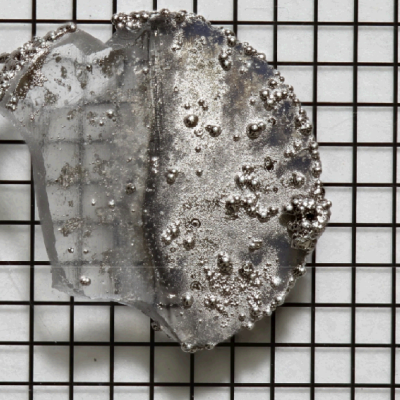LLNL researchers have continued to develop their pioneering DIW 3D-printed glass optics technology that allows for the 3D printing of single- and multi-material optical glass compositions in complex shapes. This LLNL invention further proposes incorporating dopants (including, but not limited to TiO2 and Pd) into slurries and inks for 3D printing of glass components that can then be directly…
Keywords
- Show all (240)
- Additive Manufacturing (55)
- Instrumentation (41)
- Synthesis and Processing (21)
- Sensors (14)
- Imaging Systems (9)
- Photoconductive Semiconductor Switches (PCSS) (9)
- 3D Printing (8)
- Carbon Utilization (7)
- Electric Grid (7)
- Materials for Energy Products (7)
- Semiconductors (7)
- Substrate Engraved Meta-Surface (SEMS) (7)
- Therapeutics (7)
- Compact Space Telescopes (6)
- Brain Computer Interface (BCI) (5)
- Data Science (5)
- Diode Lasers (5)
- Optical Switches (5)
- Laser Materials Processing (4)
- (-) Diagnostics (11)

This invention proposes achieving the same effect of a single, high intensity pulse through the use of a closely spaced burst of short duration pulses. By keeping the intensity of the individual pulses below the damage threshold the risk of catastrophic damage is greatly mitigated. Additionally, the pulses are directed to strike the target at locations temporally and spatially sufficiently…
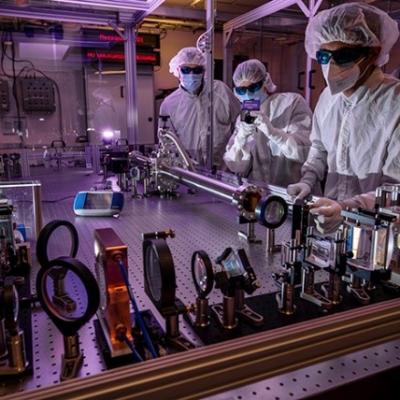
This invention proposes the use of a nonlinear spectral broadening subsystem as a post-CPA pulse compression add-on for high energy laser systems. The proposed solution utilizes the beam profile of a high peak power laser as a reference to shape a highly transmissive nonlinear plastic (e.g., CR39) itself to ensure a spatially homogeneous nonlinear spectral broadening.
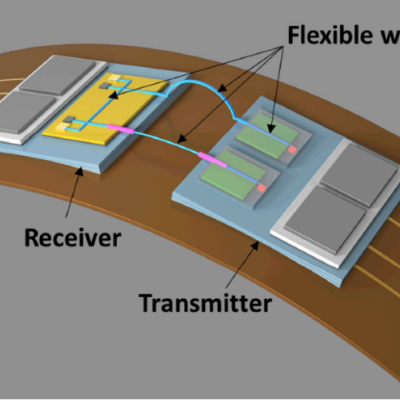
Commercial fiber optic cables are the current standard for carrying optical signals in industries like communications or medical devices. However, the fibers are made of glass, which do not have favorable characteristics for applications that require flexibility and re-routing, e.g. typically brittle, limited selection of materials, dimension constraints.
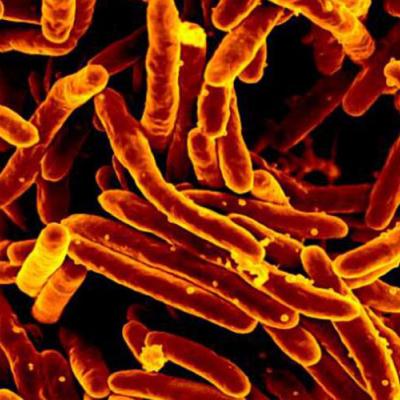
LLNL researchers have developed a high-volume, low-cost diagnostic test that is easy to use and provides results in under an hour. The testing platform will provide emergency responders and other medical professionals with the ability to screen individuals using oral and nasal samples, and obtain results in approximately 30 minutes. This point-of-care testing approach will enable rapid triage…

LNLL scientists have invented a method for multiplexed detection of PCR amplified products which can be completed in a single step. Highly validated species-specific primer sets are used to simultaneously amplify multiple diagnostic regions unique to each individual pathogen. Resolution of the mix of amplified products is achieved by PCR product hybridization to corresponding probe sequences,…
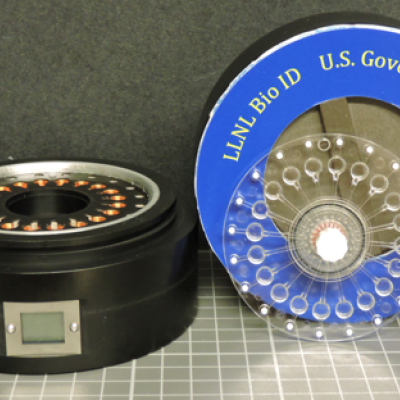
LLNL scientists have developed a battery-powered device which is low-cost and multi-chambered for the extraction and amplification of nucleic acids from environmental, clinical, and laboratory samples via loop-mediated isothermal amplification (LAMP). This platform identifies pathogenic bacteria and assists in determining the optimal treatment plan. A multi-chamber amplification cartridge in…
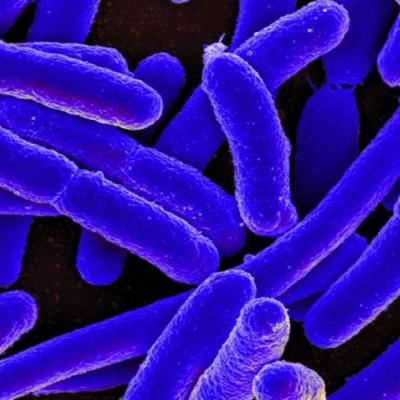
This LLNL-developed invention is multiplexed and utilizes the Luminex bead-based liquid array, which contains 100 different unique beads. Oligonucleotide probes with sequences complementary to the target sequences are covalently coupled to these unique beads. These capture beads are mixed with viral samples obtained from the patient via cheek swabbing or a throat wash and subjected to PCR in a…
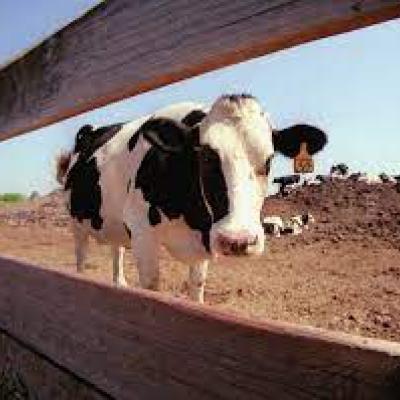
LLNL scientists have developed a high-confidence, real-time multiplexed reverse transcriptase PCR (RT-PCR) rule-out assay for foot and mouth disease virus (FMDV). It utilizes RT-PCR to amplify both DNA and RNA viruses in a single assay to detect FMDV as well as rule out other viruses that cause symptoms in livestock indistinguishable from those caused by FMDV, such as Bovine Herpes Virus-1 (…
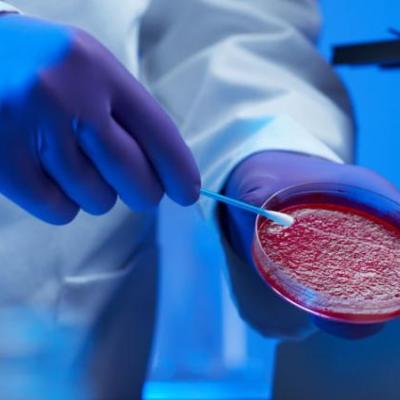
LLNL researchers have invented a system for identifying all known and unknown pathogenic or non-pathogenic organisms in a sample. This invention takes a complex sample and generates droplets from it. The droplets consist of sub-nanoliter volume reactors which contain the organism sized particles. A lysis device lyses the organisms and releases the nucleic acids. An amplifier then magnifies the…

LLNL researchers have developed a method to quickly and accurately identify the family of a virus infecting a vertebrate via PCR. Universal primer sets consisting of short nucleic acid strands of 7 to 30 base pairs in length were created to amplify target sequences of viral DNA or RNA. These primers can amplify certain identifying sequences of all viral genomes sequenced to date as well as…
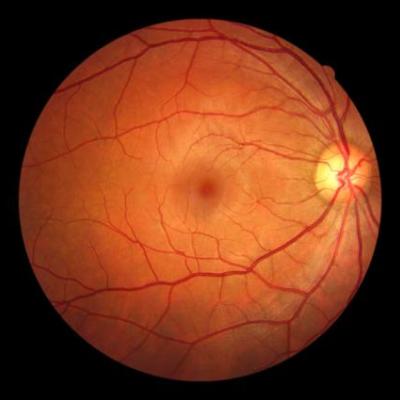
LLNL scientists have developed a method to ensure the accuracy of that tomographic image by applying adaptive optics (AO) to OCT in a single instrument (AO-OCT). AO stabilizes the image being captured by the OCT device by utilizing a Hartmann-Shack wavefront sensor and a deformable mirror, a type of mirror designed to compensate for detected waveform abnormalities (such as ones caused by a…
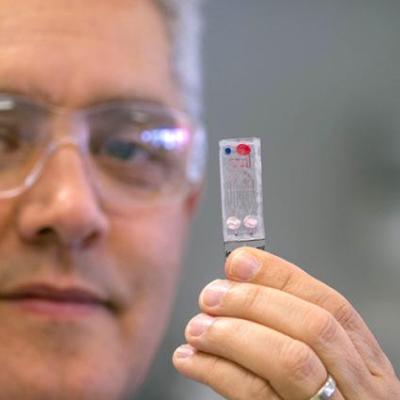
LLNL researchers have developed a portable device which analyzes one or multiple types of body fluids or gases to test for one or more medical conditions. A bodily fluid (such as blood, perspiration, saliva, breath, or urine) is put into a condenser surface and is then separated into both a primarily gas fluid component and a second one that is primarily liquid. These two samples from the same…
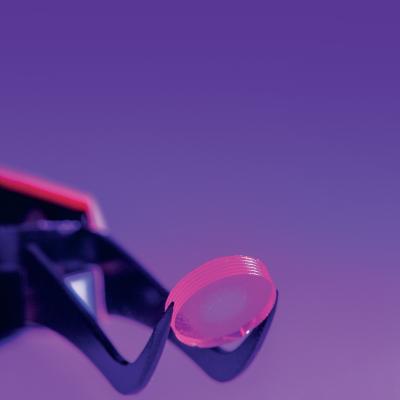
LLNL researchers have developed a custom resin formulation which uses a dispersing solvent and only a multifunctional monomer as the binding agent. The dispersing solvent system typically used has multiple components meant to achieve excellent dispersal of silica in order to create a flowable resin (rather than a paste). The dispersing agent has low vapor pressure, which allows the 3D printed…

Using various excitation wavelengths, a hyperspectral microscope takes advantage of autofluorescence and polarized light scattering from cellular components to obtain composite images that highlight their presence. The light collection efficiency is maximized to achieve image acquisition times and rates suitable for in vivo applications.


